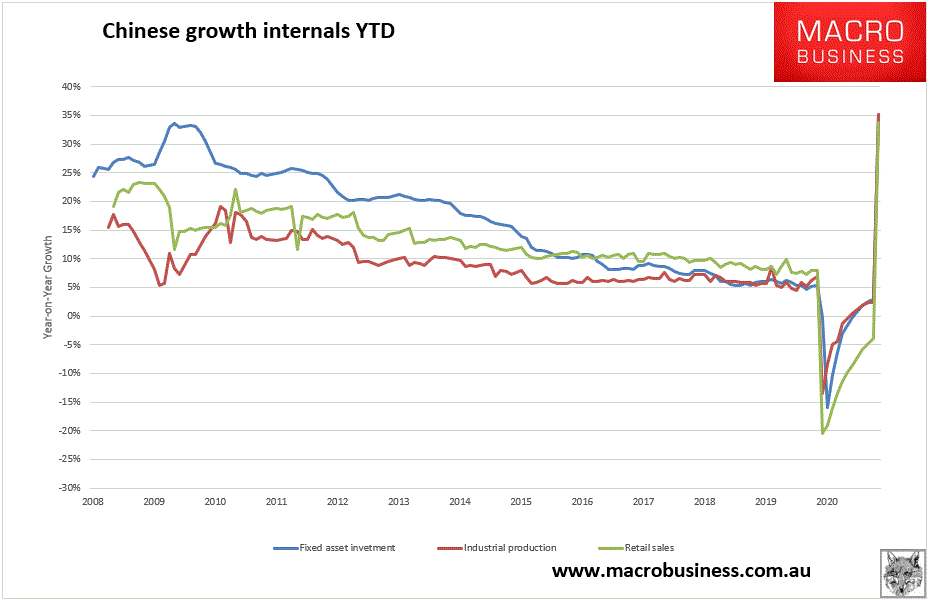China’s growth numbers were out yesterday afternoon and were very interesting indeed for the commodity analyst. The headline numbers looked out of this world on base effects, even year-to-date numbers. Fixed asset investment was up 35%. Industrial production up 35.1% and retail sales up 33.8%:
However, these numbers are going to tumble all year as the base effects wash out. Rather than go through each one in terms of actual aggregate numbers, let me show you the most important for bulk commodities which is real estate.


